Ashur – First Capital And Powerful Religious Center Of The Assyrian Empire
A. Sutherland - AncientPages.com - The beginnings of the city of Ashur, (also known as Assur) date back to the third millennium. The city was located about sixty miles to the south of the city of Mosul, Iraq, where today, there is a small village named Shergat (or Qalat Shergat), built of stones and bricks taken from the ruins of the city of Ashur (Asshur).
 Ruins of the Assyrian city, Ashur. Image source
Ruins of the Assyrian city, Ashur. Image source
From the 14th to the 9th century BC, Ashur was a thriving city. It developed fast and became an important trade center with trade routes leading to Anatolia (modern Turkey). The city exported tin from western Iran, textiles in return for copper, and provided transport of timber from Syria. Many merchants frequently visited the city, and the inhabitants of Ashur themselves began to deal with trade, who even founded their own trade colonies.
Around 1800 BC, the Amorite ruler Shamshi-Adad I included Ashur into his domain, where it became a ceremonial center and the first imperial capital of the Assyrian Empire, unquestionably, one of the greatest of the ancient world.
In Genesis 10:11 we read: "Out of that land came forth Asshur and built Nineveh, and the city Rehoboth, and Kalah…" Asshur was the second son of Shem and a grandson of Noah, however, in this case, the name Asshur is often used to refer to the place where his descendants dwelled (Ezekiel 27:23, Numbers 24:22, 24).
Ashur (its name was at the same time, the name of a god) was not a particularly large city; it had probably no more than 15,000 inhabitants and was situated south of Nineveh and on the western bank of the river Tigris, in northern Mesopotamia, corresponding to the modern country of Iraq, northeastern Syria northwestern Iran, and southeastern Turkey.
Assyrian's Vulnerable Location
Assyria had a vulnerable location in the vicinity of the major trading and raiding routes connecting north and east and stretching from Anatolia in the north to Babylon in the south. All cities near Ashur, located on the eastern side of the Tigris valley, in the foothills of Zagros, were easily accessible to foreign intrusions or armed invasions of mountain tribes, so the Assyrians still had to be ready for combat.
Assyrian "feather-robed archer" figure, superimposed over a winged sun symbol. Myths of Babylonia and Assyria by Donald A. Mackenzie (1915) - Public Domain
It was crucial to build a perfectly functioning self-defense in order to survive both in cities and within thee borders of the empire. And yet, the city of Ashur was better situated strategically and easier to defend.
Fortifications were massive and the strongest of them were built on the southern part of the city as it was definitely its most vulnerable point. From one side, the city was well-protected by the cliffs and later in front by an immense high wall with eight huge gates and a 15-meter-wide moat.
On the other three sites, the first capital of Assyria - the capital of the Old Assyrian Empire (2025–1750 BC) - was almost invincible.
Ashur – Important Religious Center
The city was Assyria's oldest capital, which was already known during Akkadian and Sumerian times. It was also an important religious center for worship of the supreme god Ashur, who became the national god of Assyria and protected the Assyrian kings. He was venerated along with Enlil and Ninurta, god of agriculture, scribes, hunting, and war. Several Assyrian kings had the god Ashur's protection in their names.
 Ruins of the ziggurat at Ashur. source
Ruins of the ziggurat at Ashur. source
In the city, there was an early cult of the gods Adad, Assur, and the goddess Ishtar. Ashur contained a large number of important religious buildings, and a handful of palaces (more exactly three of them and thirty-four temples, based on ancient sources dated to the 7th century BC).
Many ruined structures (many of them had never been excavated) include several major buildings such as the double-temple of Anu and Adad (the god of storms), another was that of Bel, the lord and of the Sumerian goddess of love and war, Ishtar, known to the Hebrews as Ashtaroth and the Astarte of the Greeks. There are also ruins of the Old Palace with its royal tombs and several living quarters scattered across the city.
However, the most striking construction among the ruins of Ashur is the ziggurat, built of backed bricks on the top of a rectangular platform composed of several layers, dedicated to the god Ashur, as well as the ground temple nearby devoted to the same god and called "Temple of the Universe". There are also temples devoted to the gods of the sun and the moon, and one with two towers sacred to Anu, god of the sky, and Adad, god of storms.
Assyrian rulers were buried in vaulted tombs beneath palaces, ancient records say, but these places were already robbed in antiquity.
Mesopotamia in 2nd millennium BC. source
Many clay tablets and bricks, covered with cuneiform inscriptions about historical events, conquests, eulogies of rulers, were discovered in the excavated ruins of Ashur.
When Assyria’s strategic value increased in the region, the capital of the empire was transferred from Ashur to Kalah and later to Nineveh about 880 BC, but Ashur still remained a highly prestigious city for a long time.
Civil wars tormented and significantly weakened the region, including the city of Ashur, especially under the reign of Shamshi Adad (824-811 BC). Later, under the next kings who followed including Tiglath Pileser III (745-727 BC) and Ashurbanipal (668-627 BC), the city was rebuilt and its walls strengthened.
Ashur was finally captured and destroyed by the Babylonians in 614 BC and did not fully recover until the Parthian Empire controlled the city from the 1st century AD until the Romans sacked it in 257. Then, the city was populated again until the 14th century before Timur (1336-1405), the founder of the Timurid Empire (1370-1507) sacked the city and murdered its inhabitants.
The city today serves as an important example of the past of the Assyrian Empire.
Written by – A. Sutherland - AncientPages.com Senior Staff Writer
Copyright © AncientPages.com All rights reserved. This material may not be published, broadcast, rewritten or redistributed in whole or part without the express written permission of AncientPages.com
Expand for referencesReferences:
Kriwaczek, P. Babylon: Mesopotamia and the Birth of Civilization
Claude Hermann Walter Johns, Ancient Assyria
More From Ancient Pages
-
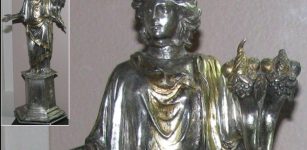 Abundantia: Roman Goddess Who Was Shaking Her Gifts From Cornucopia – ‘Horn Of Plenty’
Featured Stories | Nov 4, 2019
Abundantia: Roman Goddess Who Was Shaking Her Gifts From Cornucopia – ‘Horn Of Plenty’
Featured Stories | Nov 4, 2019 -
 Burnt Mound Complex Dated To Bronze Age – Uncovered At Suffolk Site
Archaeology | Jun 19, 2023
Burnt Mound Complex Dated To Bronze Age – Uncovered At Suffolk Site
Archaeology | Jun 19, 2023 -
 Enigmatic Footprints Reveal Humans Were In Spain 200,000 Years Earlier Than Previously Thought
Archaeology | Nov 11, 2022
Enigmatic Footprints Reveal Humans Were In Spain 200,000 Years Earlier Than Previously Thought
Archaeology | Nov 11, 2022 -
 Forbidden Knowledge: Secret Ancient Gates Of The Shining Ones – Geomantic Energy Vortices – Part 2
Ancient Mysteries | Jul 16, 2019
Forbidden Knowledge: Secret Ancient Gates Of The Shining Ones – Geomantic Energy Vortices – Part 2
Ancient Mysteries | Jul 16, 2019 -
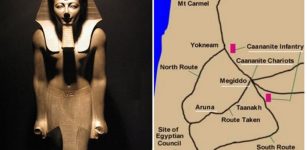 On This Day In History: Battle Of Megiddo Between Thutmose III And King Of Kadesh’s Coalition – On Apr 16, 1457
News | Apr 16, 2016
On This Day In History: Battle Of Megiddo Between Thutmose III And King Of Kadesh’s Coalition – On Apr 16, 1457
News | Apr 16, 2016 -
 Battle Of Arsuf – Site Where King Lionheart And The Crusaders Defeated Saladin – Found
Archaeology | Aug 1, 2020
Battle Of Arsuf – Site Where King Lionheart And The Crusaders Defeated Saladin – Found
Archaeology | Aug 1, 2020 -
 Samurai Swords: Katana And Wakizashi And Their Long Tradition
Ancient Traditions And Customs | Aug 6, 2018
Samurai Swords: Katana And Wakizashi And Their Long Tradition
Ancient Traditions And Customs | Aug 6, 2018 -
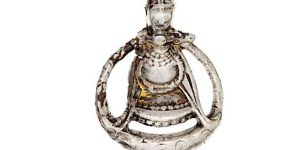 A Pioneering Study Provides New Insights Into Pregnancy During The Viking Age
Archaeology | May 14, 2025
A Pioneering Study Provides New Insights Into Pregnancy During The Viking Age
Archaeology | May 14, 2025 -
 The Maya Produced Rubber 3,000 Years Before Goodyear
Ancient History Facts | Mar 12, 2016
The Maya Produced Rubber 3,000 Years Before Goodyear
Ancient History Facts | Mar 12, 2016 -
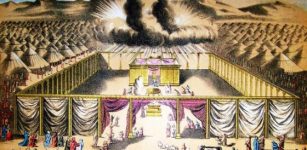 Intriguing Discovery Could Offer Proof Of The Tabernacle – Has The Dwelling Place Of God Been Located?
Archaeology | Nov 9, 2013
Intriguing Discovery Could Offer Proof Of The Tabernacle – Has The Dwelling Place Of God Been Located?
Archaeology | Nov 9, 2013 -
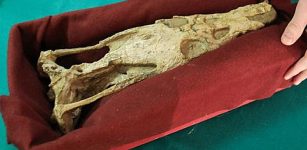 More Than 1000 Bones Of Extinct Predators From 240 Million Years Ago – Found In Upper Silesia, Poland
Fossils | Dec 11, 2023
More Than 1000 Bones Of Extinct Predators From 240 Million Years Ago – Found In Upper Silesia, Poland
Fossils | Dec 11, 2023 -
 Underwater Robot Investigates Edo Period Decorative Tiles Off Shizuoka, Japan
Archaeology | Dec 7, 2015
Underwater Robot Investigates Edo Period Decorative Tiles Off Shizuoka, Japan
Archaeology | Dec 7, 2015 -
 Riddle Of The Ancient Lost City Beneath Missouri – A Puzzling Discovery
Civilizations | Mar 21, 2022
Riddle Of The Ancient Lost City Beneath Missouri – A Puzzling Discovery
Civilizations | Mar 21, 2022 -
 Laocoon – A Trojan Priest Who Offended The Gods And Was Strangled By Sea Serpents
Featured Stories | Nov 15, 2021
Laocoon – A Trojan Priest Who Offended The Gods And Was Strangled By Sea Serpents
Featured Stories | Nov 15, 2021 -
 What Caused The Year Without A Summer In 1816?
Ancient History Facts | Sep 17, 2018
What Caused The Year Without A Summer In 1816?
Ancient History Facts | Sep 17, 2018 -
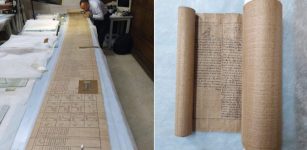 Never-Before-Seen 16 Meters Long Ancient Egyptian Papyrus Unveiled To The Public
Artifacts | Feb 21, 2023
Never-Before-Seen 16 Meters Long Ancient Egyptian Papyrus Unveiled To The Public
Artifacts | Feb 21, 2023 -
 Dozens Of Unique 2,500-Year-Old Ceremonial Treasures Discovered In A Drained Peat Bog
Archaeology | Jan 27, 2023
Dozens Of Unique 2,500-Year-Old Ceremonial Treasures Discovered In A Drained Peat Bog
Archaeology | Jan 27, 2023 -
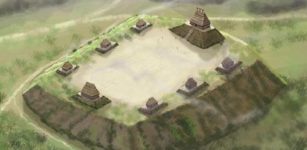 Emerald Mound In The Ancient City Of Natchez: Second Largest Temple Mound In North America
Featured Stories | Feb 22, 2018
Emerald Mound In The Ancient City Of Natchez: Second Largest Temple Mound In North America
Featured Stories | Feb 22, 2018 -
 Alexander The Great’s Mysterious And Unexplained Encounter In Babylon
Ancient Mysteries | Jul 15, 2021
Alexander The Great’s Mysterious And Unexplained Encounter In Babylon
Ancient Mysteries | Jul 15, 2021 -
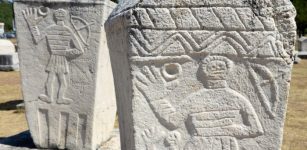 Enigmatic ‘Stone Sleepers’ – Megalithic Tombstones ‘Stecci’ In The Western Balkans
Civilizations | Dec 3, 2018
Enigmatic ‘Stone Sleepers’ – Megalithic Tombstones ‘Stecci’ In The Western Balkans
Civilizations | Dec 3, 2018


